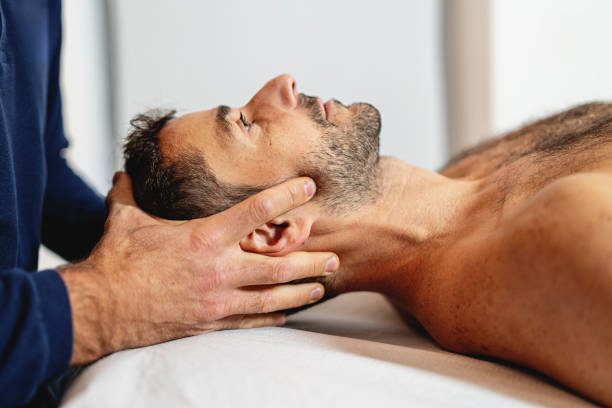Craniosacral Therapy

Understanding Craniosacral Therapy
Craniosacral Therapy (CST) is a gentle, hands-on method of evaluating and enhancing the function of the craniosacral system. This system encompasses the membranes and cerebrospinal fluid that surround and protect the brain and spinal cord. CST was developed by Dr. John Upledger in the 1970s and has since gained popularity as an effective treatment for a variety of conditions.
How Does Craniosacral Therapy Work?
CST involves the application of very light touch, typically no more than the weight of a nickel, to manipulate the craniosacral system. By gently palpating areas such as the skull, spine, and pelvis, therapists can detect and release restrictions in the soft tissues that surround the central nervous system. This process helps to improve the flow of cerebrospinal fluid, enhancing the body’s ability to heal itself.
Benefits of Craniosacral Therapy
1. Pain Relief: CST can be effective in alleviating chronic pain conditions such as migraines, neck and back pain, and fibromyalgia. By reducing tension in the craniosacral system, CST helps alleviate the underlying causes of pain.
2. Stress Reduction: The gentle nature of CST promotes deep relaxation and stress relief. It can help reduce symptoms of anxiety, depression, and post-traumatic stress disorder (PTSD).
3. Enhanced Immune Function: By optimizing the flow of cerebrospinal fluid and improving nervous system function, CST can support the immune system, helping the body fend off illness and recover more quickly from infections.
4. Improved Mobility and Function: CST can enhance mobility and function in patients with neurological conditions, such as multiple sclerosis, stroke, and traumatic brain injury.
What to Expect During a Session
A typical CST session lasts between 45 to 60 minutes. The client lies fully clothed on a massage table, and the therapist uses gentle touch to assess and treat areas of restriction. Clients often report feeling a sense of deep relaxation and may even fall asleep during the session. Some may experience mild sensations of warmth or tingling as restrictions are released.
Aftercare and Potential Side Effects
Following a CST session, it’s common to feel relaxed and rejuvenated. Some clients may experience mild soreness or an increase in symptoms temporarily, which is a normal part of the healing process as the body adjusts. Drinking plenty of water, resting, and gentle stretching can help ease any discomfort. If any unusual symptoms persist, it’s important to contact your therapist.
Is Craniosacral Therapy Right for You?
CST is suitable for people of all ages, from infants to the elderly. It’s particularly beneficial for those suffering from chronic pain, stress-related conditions, and neurological disorders. However, it’s essential to consult with a qualified CST practitioner to determine if it’s appropriate for your specific needs. Individuals with certain medical conditions, such as recent head injuries or severe osteoporosis, should seek medical advice before undergoing CST.
